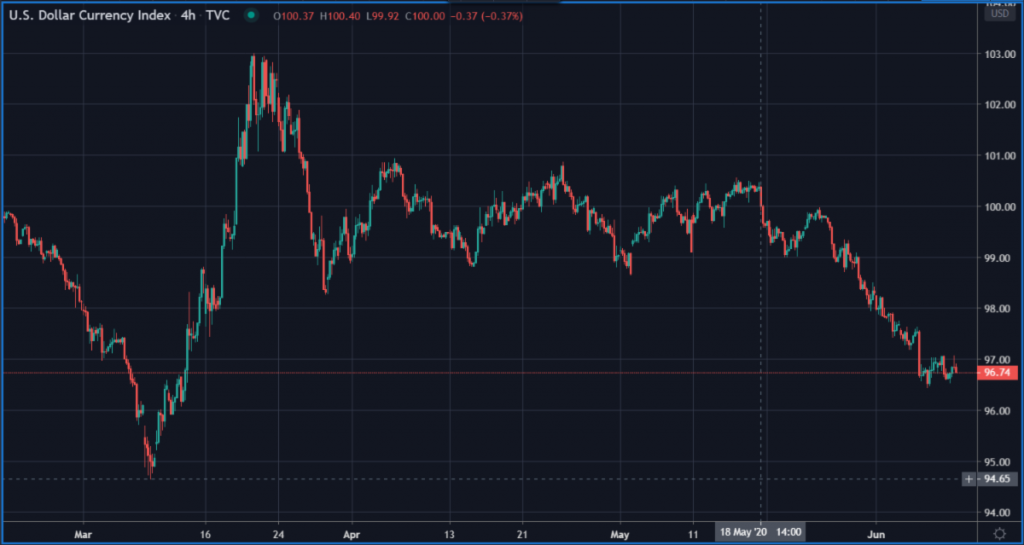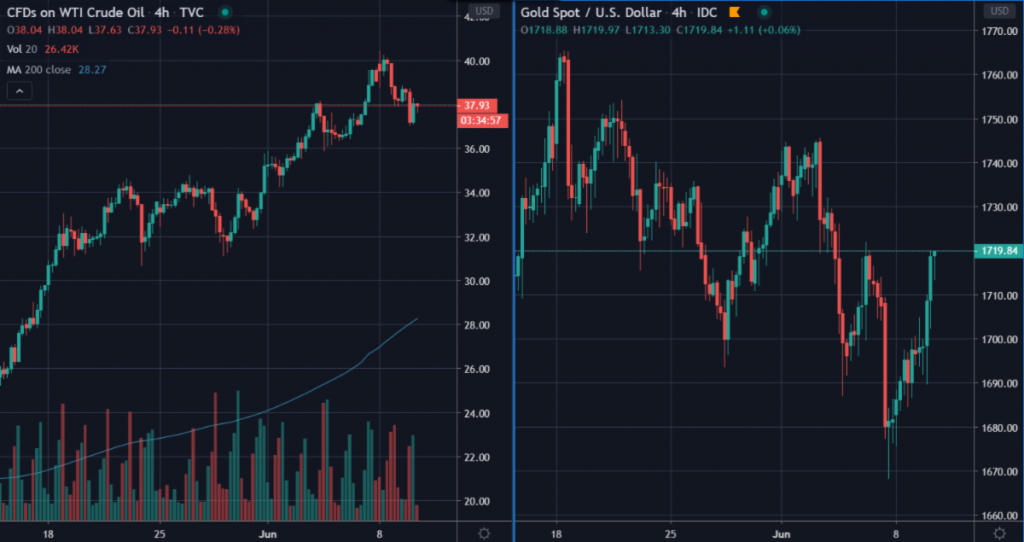Bitcoin Remains Firm As Fed-Induduced US Dollar Weakness Continues

That we’re in strange times right now, I don’t think anyone will argue. The chain reaction of global events leading up to this point is the stuff that books and movies are made from, and no doubt historic records referring to this time will be quite popular at some point in the future.
Yesterday, things got even weirder though, at least from this market watcher’s perspective. Several companies that most levelheaded analysts would agree should be on their way to zero are actually headed to the sky.
Hertz Global Holdings Inc. and J.C. Penney Co., both of which have recently filed for bankruptcy, both surged about 100% on Monday. A company called Nikola, which is a brand new competitor in the electric truck industry but has yet to produce even a single vehicle, soared to a total valuation of $26 billion.
Finally, shares in Chesapeake Energy shot up 181% during regular trading, which was followed the company announcing after the closing bell that they’re filing for bankruptcy soon.
These four examples are only a microcosm of the rest of the market, in what has to be the most surreal episode of “ditch cash and dash to trash” the world has ever witnessed.
Warren Buffett, Howard Marks, Carl Icahn, and many other prominent investors have been offloading stocks these last few months, pointing at bloated valuations and an already over-extended 11-year bull run.
My neighbor who works as a bank teller informed me the other day that she invested her entire life savings into the market back in mid-May and is now “way up” on those investments.
Can it be that the smart money is now dumb and the dumb money is now smart? Is this time really different?
The Fed Dilemma
No doubt the main perpetrator behind these ridiculous stock moves is the unwavering support of the Federal Reserve, which has promised to provide an “infinite” amount of capital in order to support the markets.
The thing about infinity is that it doesn’t differentiate between good companies and bad companies. In fact, once we remove all risk, there’s arguably more upside potential in an asset that has little inherent value.
At this point, I’m wondering just what the Fed is thinking when they see the current market conditions. Luckily we’re about to find out as the Fed’s two day meeting starts today. So tomorrow afternoon, we’ll get to hear from J-POW himself.
The recent market exuberance, along with the latest jobs data, present a real dilemma for the Fed. As we discussed, the sudden drop in unemployment and addition of 2.5 million jobs is fantastic news for the economy.
Whether these figures are accurate or not, it does seem clear that the economy is finally getting back on track. So if the job market is doing well, and stocks are doing great, what reason does the Fed have to continue injecting copious amounts of cash into the markets?
No doubt, if they do announce further stimulus, citing things like the current unrest or election uncertainty or even recycle the used hashtag COVID-19, which nobody seems to be worried about anymore, it would risk making the market even crazier than it already is and further detaching stocks from reality.
On the other hand, if they withdraw the stimulus, the risk is even greater. By pulling support, even slightly, they risk watching the stocks try to catch up with the current economy, meaning a strong, downward movement that probably wouldn’t look very good for the Fed or the president.
So. … Which one do you think they’ll choose?
Bye, Cash
In this graph we can see how the U.S. dollar, which played such a strong and mighty role during the historic mid-March madness, has been declining steadily since the 18th of May.

With the U.S. dollar down, the price of oil (left below) is up as we might expect, but the price of gold (right below), on the other hand, has declined slightly during this period. Of course, we’re seeing a bit of a trend reversal this morning, as stocks are down 1% in the first hour of trading. I guess the craziness was a bit too much for some, but we’ll see how the day closes.

The digital asset market however, remains completely stable. Crypto-enthusiasts on social media today are watching progressions in the traditional markets with dropped jaws, and more than one has already pointed out the freaky familiarity and the feeling that strangely resembles the 2017 bitcoin bubble.
I’m a highly respected and well-known author in the cryptocurrency field. I have been writing about Bitcoin, Ethereum, and other digital assets for over 5 years which has made me one of the most knowledgeable voices in the space. My work has appeared in major publications such as CoinDesk, Forbes, and The Wall Street Journal. In addition to my writing, I’m also an active investor and advisor in the cryptocurrency space.
